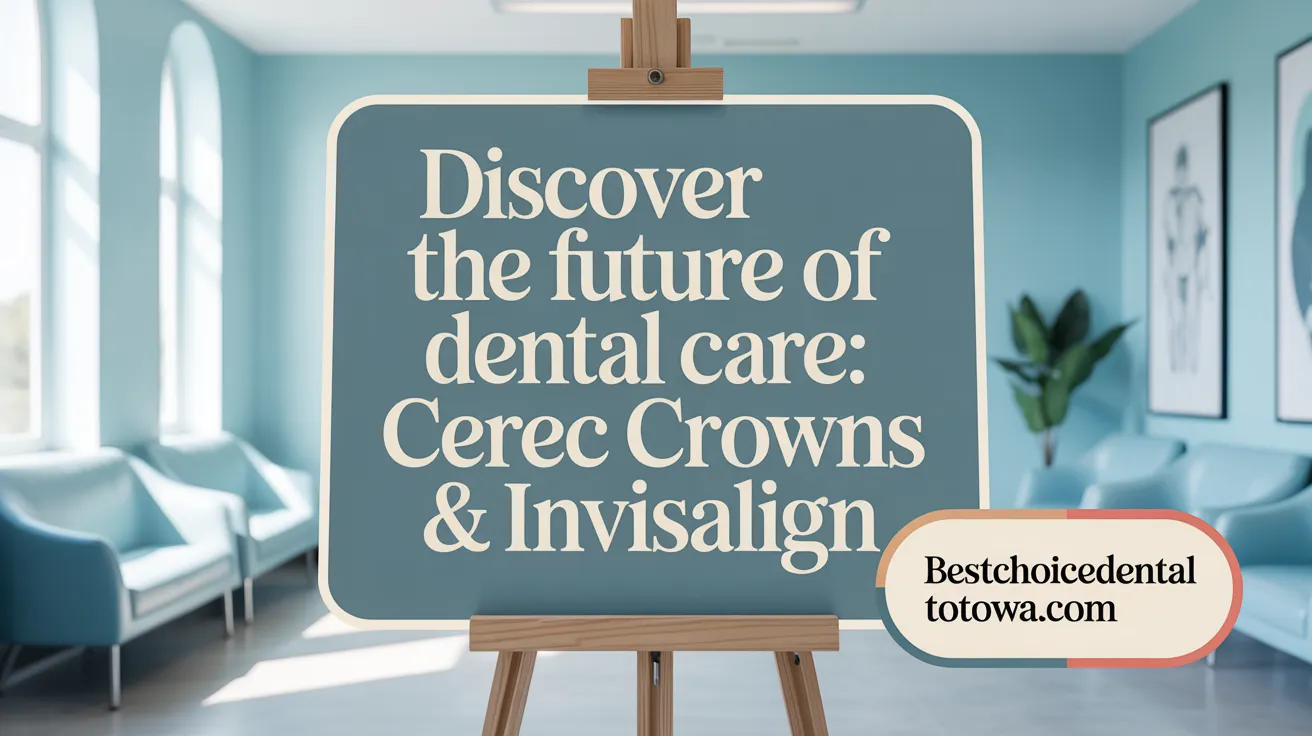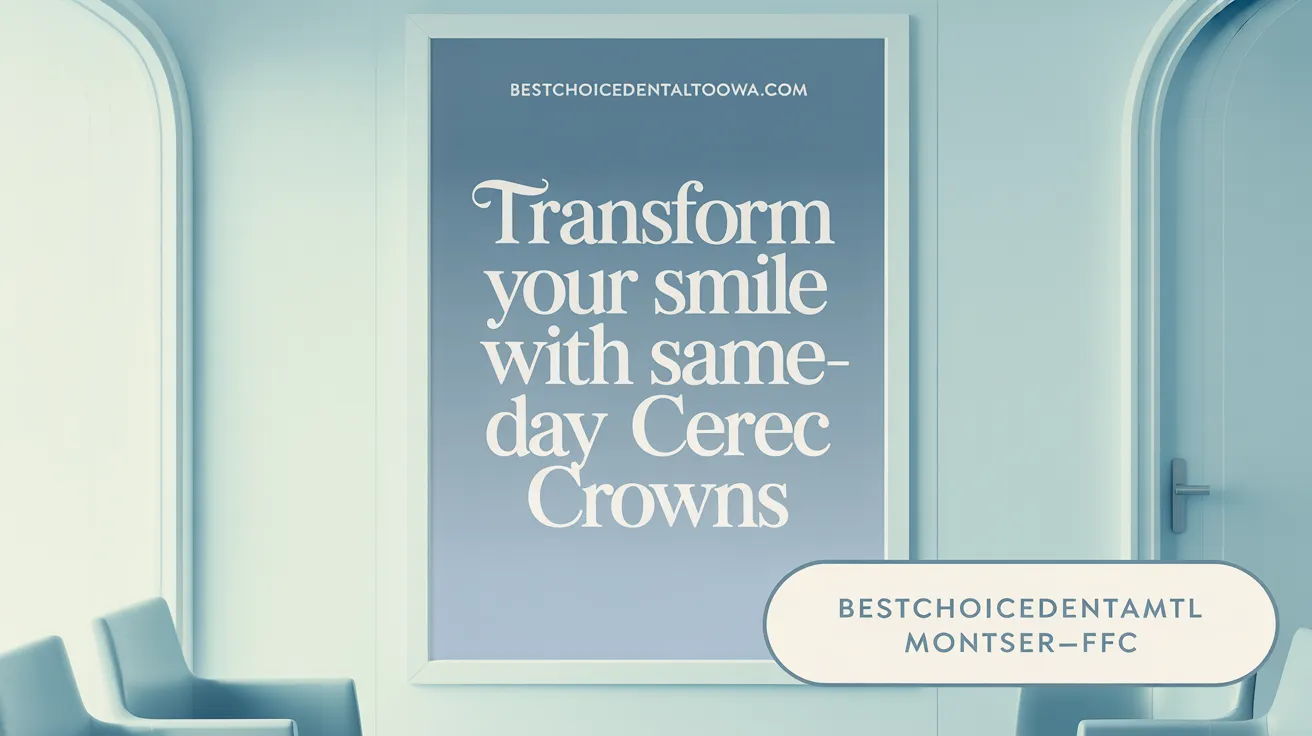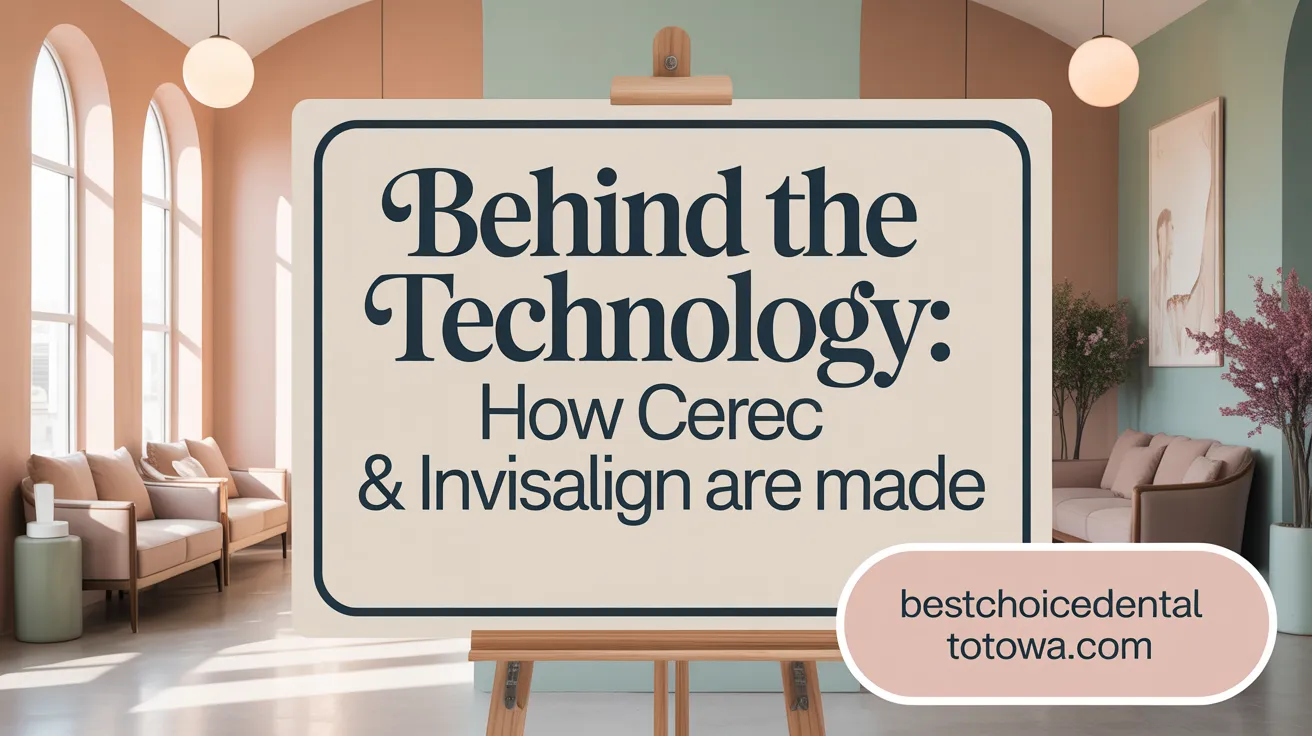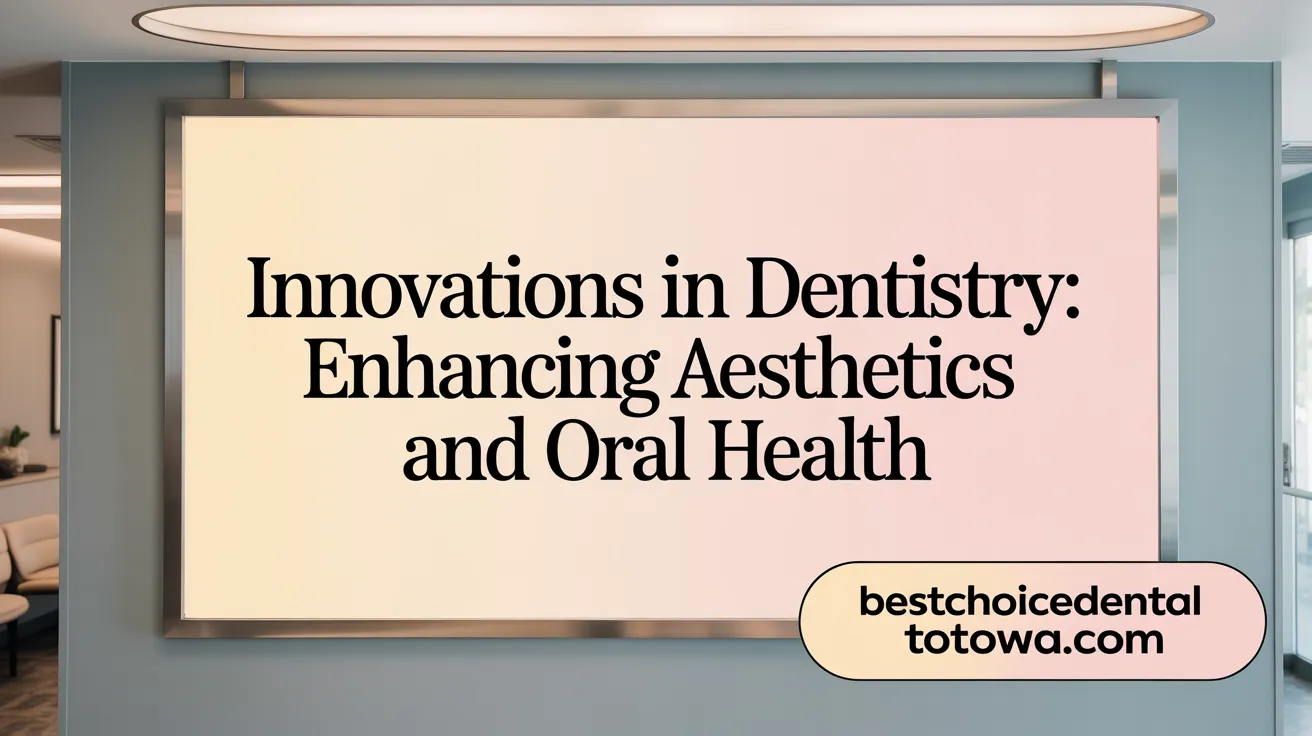Introduction to Modern Dental Innovations
Modern dentistry has witnessed remarkable advancements that have transformed the way dental restorations and orthodontic treatments are delivered. Among these innovations, CEREC crowns and Invisalign have emerged as game-changers, enabling efficient, precise, and patient-friendly solutions for dental restoration and teeth alignment. This article explores the pivotal roles these technologies play in contemporary dental practice, highlighting their benefits, technological foundations, and their contribution to improved oral health and aesthetics.
Understanding CEREC Crowns and Invisalign in Contemporary Dentistry

What are CEREC crowns and Invisalign, and how do they contribute to modern dentistry?
CEREC crowns are an innovative type of dental restoration created using CAD/CAM dental crowns (Computer-Aided Design and Computer-Aided Manufacturing) technology. This system allows dentists to design, mill, and place custom crowns in a single appointment, often within approximately two hours. Made from high-strength, tooth-colored ceramic or porcelain, these crowns offer a natural look, durability, and a high degree of biocompatibility. The process involves digital intraoral scanning to capture precise images of the teeth, computer-assisted design to create the crown, and in-office milling to produce the restoration. This streamlined approach eliminates the need for temporary crowns and reduces the number of visits, providing a faster, more comfortable experience for patients.
Invisalign is a modern orthodontic treatment that utilizes a series of clear, removable aligners to straighten teeth discreetly. These aligners are custom-made using advanced 3D imaging technology, which maps out the entire treatment plan before fabrication. The aligners apply gentle, gradual pressure to teeth, guiding them into proper alignment with minimal discomfort and nearly invisible aesthetics. Patients typically wear each set of aligners for about one to two weeks, with regular check-ins to monitor progress.
Both CEREC crowns and Invisalign exemplify the technological advancements shaping contemporary dentistry. They enhance treatment precision, improve patient comfort, and reduce treatment times. By integrating digital workflows and minimally invasive techniques, these innovations contribute significantly to more efficient, aesthetically pleasing, and long-lasting dental care.
Benefits and Clinical Advantages of CEREC Crowns

What are the benefits and advantages of using CEREC crowns in dental treatment?
CEREC crowns provide many notable benefits that are transforming modern dentistry. One of the most significant is their ability to be fabricated and placed in a single appointment. Using advanced digital technology, the dentist performs a digital scan of the tooth, immediately designs the restoration with CAD software , and mills the crown right in the office. This seamless workflow not only saves time—reducing treatment from multiple visits to just one—but also enhances patient comfort by avoiding traditional impressions, which can be uncomfortable or gag-inducing.
Made from high-quality, tooth-colored ceramic , CEREC crowns offer a natural aesthetic that closely resembles real teeth. The precise digital fit ensures minimal removal of healthy tooth structure, helping preserve overall oral health. Durable for 10-15 years with proper care, these crowns are a reliable choice for long-term dental restoration.
Overall, CEREC technology makes the process faster, more efficient, and more aesthetically pleasing. Patients benefit from fewer appointments, less discomfort, and a restoration that looks natural and functions well for years.
What are the clinical and technological advantages of minimally invasive, same-day dental restorations like those provided by CEREC technology?
Minimally invasive restorations such as those created with CEREC technology hold significant clinical and technological advantages. Clinically, they drastically reduce chair time and the number of visits needed, which is especially beneficial for busy patients or those with dental anxiety. The digital workflow allows for accurate impressions without messy mold materials, leading to better-fitting restorations that preserve more of the natural tooth structure.
From a technological perspective, CEREC uses high-precision 3D imaging combined with CAD/CAM systems to design and manufacture restorations onsite. This process results in highly accurate, natural-looking results that match the patient’s existing teeth in color and translucency. The strength and durability of these ceramic restorations make them suitable for both front and back teeth, with some lasting 10 to 15 years or more.
Furthermore, the digital process minimizes environmental waste by reducing the need for physical models and shipping. The result is a streamlined, predictable treatment that enhances patient satisfaction, reduces procedural discomfort, and maintains excellent aesthetic and functional outcomes.
Invisalign: A Modern Orthodontic Solution

What are the advantages of Invisalign technology compared to traditional braces?
Invisalign has revolutionized teeth straightening with its advanced 3D computer imaging and user-friendly design. Unlike traditional braces that use brackets, wires, and often noticeable metal components, Invisalign employs a series of clear, custom-made plastic aligners. These aligners are nearly invisible, making them especially popular among adults and teenagers who prefer a discreet orthodontic option.
The material benefits of Invisalign include smooth, BPA-free plastic that fits snugly over teeth, reducing discomfort and irritation often caused by metal braces. Since the aligners are removable, they simplify daily oral hygiene routines—patients can brush and floss normally without navigating around brackets and wires. Moreover, removing the aligners during meals eliminates dietary restrictions, allowing patients to enjoy their favorite foods without concern.
Digital planning is a cornerstone of Invisalign’s success. Using 3D imaging and computer-aided design software, each treatment plan is customized precisely to the patient's dental structure. This digital approach allows for high predictability, often cutting down treatment duration compared to traditional braces.
Compared to conventional methods, Invisalign offers several lifestyle benefits: fewer dentist visits for adjustments, less risk of orthodontic emergencies, and the convenience of clear, removable aligners that fit seamlessly into daily life. Nevertheless, success largely depends on the patient’s discipline in wearing aligners for the prescribed 20-22 hours a day.
Overall, Invisalign combines technological innovation with aesthetic and practical advantages, providing a comfortable, discreet, and effective solution for a wide range of orthodontic needs.
Technological Foundations: How CEREC Crowns and Invisalign Are Made and Used

What are the technological processes behind the creation and placement of CEREC crowns technology and Invisalign treatment technology?
The development and application of both CEREC crowns and Invisalign aligners rely heavily on advanced digital and manufacturing technologies that revolutionize modern dentistry.
CEREC crowns begin with digital scanning where intraoral cameras capture detailed three-dimensional images of the prepared tooth. These high-resolution images serve as the basis for designing the crown using sophisticated CAD (Computer-Aided Design) software. The virtual design ensures a precise fit and accurate color matching, mimicking natural tooth aesthetics.
Once designed, the crown is automatically positioned within a virtual block of ceramic material and sent to CAM (Computer-Aided Manufacturing) milling units located within the dental practice. These units carve the restoration from high-strength ceramic or zirconia blocks, often in just 15-30 minutes. After milling, the crown may undergo additional processes like glazing or sintering to enhance its durability, strength, and visual appeal.
In parallel, Invisalign treatment employs 3D digital scans of the patient’s teeth, typically obtained through specialized intraoral scanners. These scans produce detailed digital impressions, replacing traditional moldings that can be uncomfortable.
Using the scans, clinicians utilize treatment planning software—such as ClinCheck—to map out precise tooth movement sequences. This software creates a virtual treatment plan, allowing both dentist and patient to visualize the expected final result.
The Invisalign aligners are then fabricated using either 3D printing technology or thermoforming of medical-grade plastic sheets, designed to fit snugly over teeth. Each aligner is custom-made to apply specific pressure points that gradually move teeth into the desired position over several weeks.
Overall, these digital workflows—integrating 3D imaging, CAD/CAM software, and precise manufacturing—streamline the creation of both dental restorations and orthodontic devices. They significantly enhance accuracy, reduce material waste, minimize patient discomfort, and allow for same-day or rapid production of personalized dental solutions.
Integrating Aesthetics, Health, and Future Trends in Dentistry

How do CEREC crowns and Invisalign differ in terms of their purpose, benefits, and suitability for patients?
CEREC crowns are primarily used for restorative purposes, designed to quickly repair damaged, decayed, or broken teeth through same-day digital impressions and milling. They are made from durable ceramic, offering a natural appearance and long-lasting results in just one visit. This makes them ideal for patients needing immediate restoration with minimal inconvenience.
Invisalign, meanwhile, is an orthodontic treatment that employs clear plastic aligners to gradually straighten misaligned teeth and correct bite issues. Its benefits include discreet appearance, removable convenience, improved oral hygiene, and a typically shorter treatment period compared to traditional braces.
While both can sometimes be used together—such as placing crowns on teeth being straightened—each serves distinct functions. CEREC restorations are best suited for repairing and restoring teeth quickly, whereas Invisalign is ideal for improving overall dental alignment and aesthetics over time. When planning treatment, dentists consider individual needs—using CEREC for vital repairs and Invisalign for long-term orthodontic correction—sometimes combining both for comprehensive care.
How do CEREC crowns and Invisalign contribute to improved dental aesthetics and overall oral health?
CEREC crowns enhance aesthetics by providing seamless, natural-looking restorations that match surrounding teeth in color and shape, restoring confident smiles quickly. Properly fitted crowns protect weakened teeth, prevent further decay, and improve bite function, thereby supporting overall oral health. The digital process ensures precision, reducing gaps where decay or bacteria could develop.
Invisalign improves dental aesthetics by creating a straighter, more aligned smile without the appearance of traditional braces. The aligners are removable, promoting better oral hygiene and reducing plaque buildup, which helps prevent cavities and gum disease. Both treatments support long-term oral health and aesthetic appeal—crowns repair existing damage while Invisalign corrects misalignment and prevents future issues.
General benefits include better bite function, enhanced appearance, increased confidence, and healthier teeth and gums over time.
What are the latest trends and innovations in cosmetic and restorative dentistry involving CEREC crowns and Invisalign?
Recent advancements include the integration of artificial intelligence (AI), 3D printing, and advanced digital scanners to streamline treatment planning and fabrication. CEREC technology now produces even more durable and aesthetically superior restorations using improved ceramic materials, with faster processing times and greater customization. Similarly, Invisalign’s treatment plans benefit from refined software like ClinCheck and improved aligner materials such as SmartTrack, enabling effective treatment of complex cases.
Technologies like laser dentistry are gaining popularity for minimally invasive procedures, such as gum contouring and whitening, which complement restorative work. Digital workflows enable same-day creation of prosthetics and aligners with high precision, enhancing patient comfort and satisfaction.
Furthermore, bioactive and biocompatible materials are being introduced for restorations, promoting tissue regeneration and long-term stability. The trend toward personalized care utilizes 3D imaging and virtual simulations, allowing patients to preview their results beforehand.
What recent advancements and future directions are shaping the field of cosmetic and restorative dental procedures involving technologies like CEREC and Invisalign?
Recent progress in digital dentistry involves combining CAD/CAM systems with artificial intelligence to customize treatments more precisely. Innovations in biomaterials include stronger, more natural-looking ceramics and composites that ensure durability and aesthetics. Remote diagnostics and teledentistry expand access to specialized care, especially for those in underserved areas.
Looking ahead, developments aim to incorporate virtual and augmented reality for patient education and treatment simulations, creating more engaging and informed experiences. Nanotechnology promises faster, minimally invasive procedures with enhanced tissue regeneration capabilities.
Future trends also focus on expanding indications for digital orthodontics and restorations, making complex cases more manageable through integrated digital workflows. Continued research into stem cell therapies and tissue engineering aims to regenerate natural dental tissues, leading to potentially less invasive, more natural treatments.
This evolution in dental technology not only enhances patient outcomes but also aims to make procedures faster, more comfortable, and more personalized—paving the way for a future where aesthetic and oral health are seamlessly integrated.
Conclusion: Embracing Digital Dentistry for a Healthier Smile
CEREC crowns and Invisalign have revolutionized modern dentistry by combining advanced digital technologies with patient-centered approaches. CEREC’s capability for same-day, aesthetically pleasing, and durable crown restorations complements Invisalign’s discreet, comfortable, and effective orthodontic treatment, together fostering enhanced oral health and smile confidence. Their integration exemplifies a broader trend toward minimally invasive, efficient, and technologically driven dental care that prioritizes precision and patient convenience. As innovations continue to emerge, these technologies will remain at the forefront of shaping the future of cosmetic and restorative dental procedures, ensuring improved outcomes and accessible treatments for diverse patient needs.
